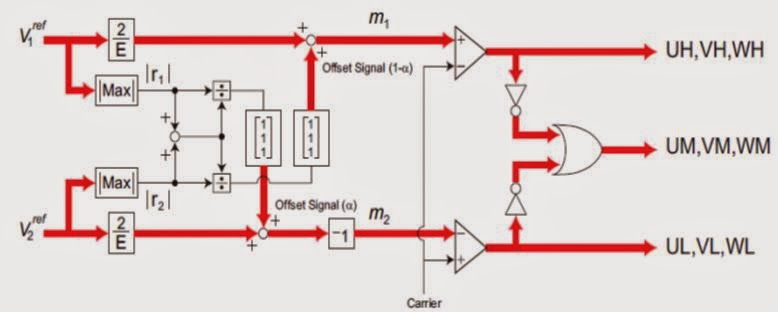An Improved Power-Quality
30-Pulse AC–DC for Varying Loads
ABSTRACT
This
paper presents the design and analysis of a novel 30-pulse ac–dc converter for
harmonic mitigation under varying loads. The proposed 30-pulse ac-dc converter
is based on a polygon-connected autotransformer with reduced magnetics. The
proposed ac–dc converter is able to eliminate lower than29th order harmonics in
the ac supply current. The resulting supply current is near sinusoidal in shape
with low total harmonic distortion and a nearly unity power factor. Moreover,
the design of an autotransformer is modified to make it suitable for retrofit
applications, where converter is found to be suitable for retrofit applications
with a large load
KEYWORDS:
1.
Autotransformer
2. Multi pulse ac–dc converter
3. Polygon connection
4. power-quality (PQ) improvement.
SOFTWARE: Matlab/Simulink
SCHEMATIC DIAGRAM:
Fig.1 Six-pulse diode-bridge rectifier fed
load (topology “A”).
Fig.2. Proposed
30-pulse ac–dc converter-fed varying load (topology B).
CONCLUSION:
A new 30-pulse ac–dc converter-feeding varying load
has been designed, modeled, simulated, and developed to demonstrate its
improved performance. The proposed 30-pulse ac–dc converter consists of a
reduced rating polygon-connected autotransformer for producing the desired phase
shifted voltages and is suitable for retrofit applications, where presently a 6-pulse
diode-bridge rectifier is used. It has resulted in the elimination of a lower
than 29th harmonic in the supply current. The proposed ac–dc converter has
resulted in a THD of supply current of less than 5% in a wide operating range
of the load with nearly unity power factor operation. The proposed converter
results in the reduction in rating of the magnetics, leading to savings in
weight, size, volume, and, finally, the overall cost of the converter system.
The results obtained on the developed converter configuration also validate the
simulated models and the design procedure
REFERENCES:
[1]
B. K. Bose, “Recent advances in power electronics,” IEEE Trans.Power Electron.,
vol. 7, no. 1, pp. 2–16, Jan. 1992.
[2]
G. T. Heydt, Electric Power Quality. West La Fayette, IN: Stars in a Circle
Publication, 1991.
[3]
M. H. J. Bollen, Understanding Power Quality Problems: Voltage Sags and
Interruptions. Piscataway, NJ: IEEE Press, 2000.
[4]
A. Ghosh and G. Ledwich, “Power quality enhancement using custom power devices,”
in. Norwell, MA: Kluwer, 2002.









